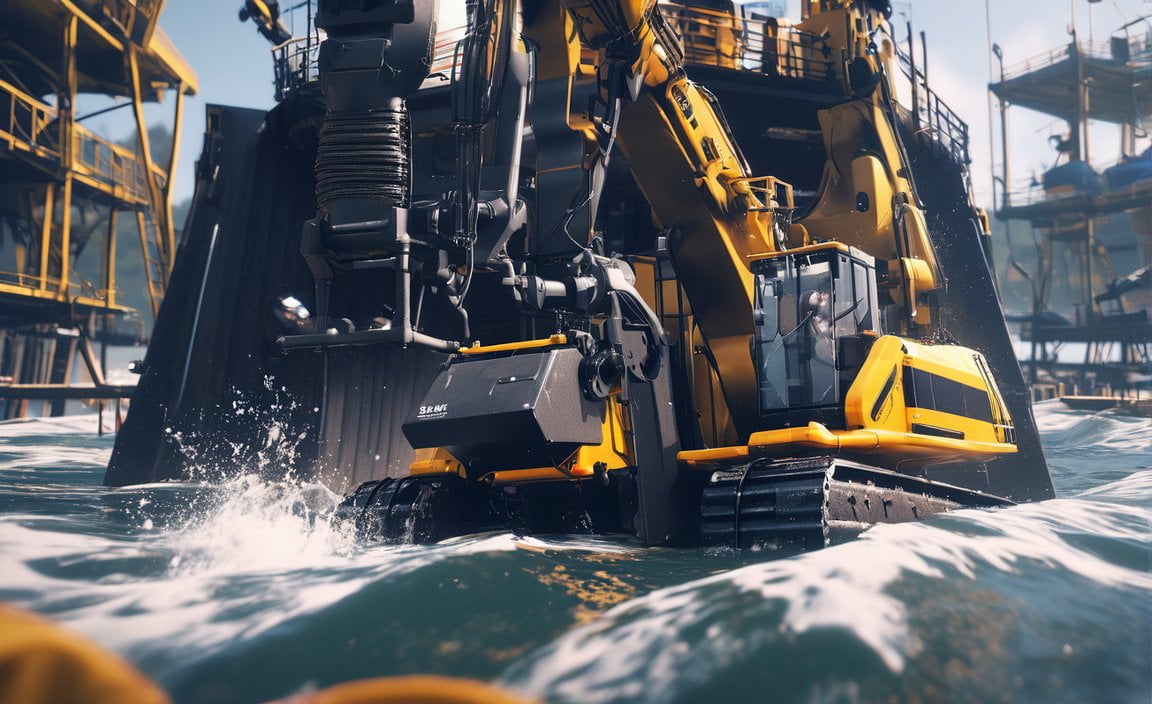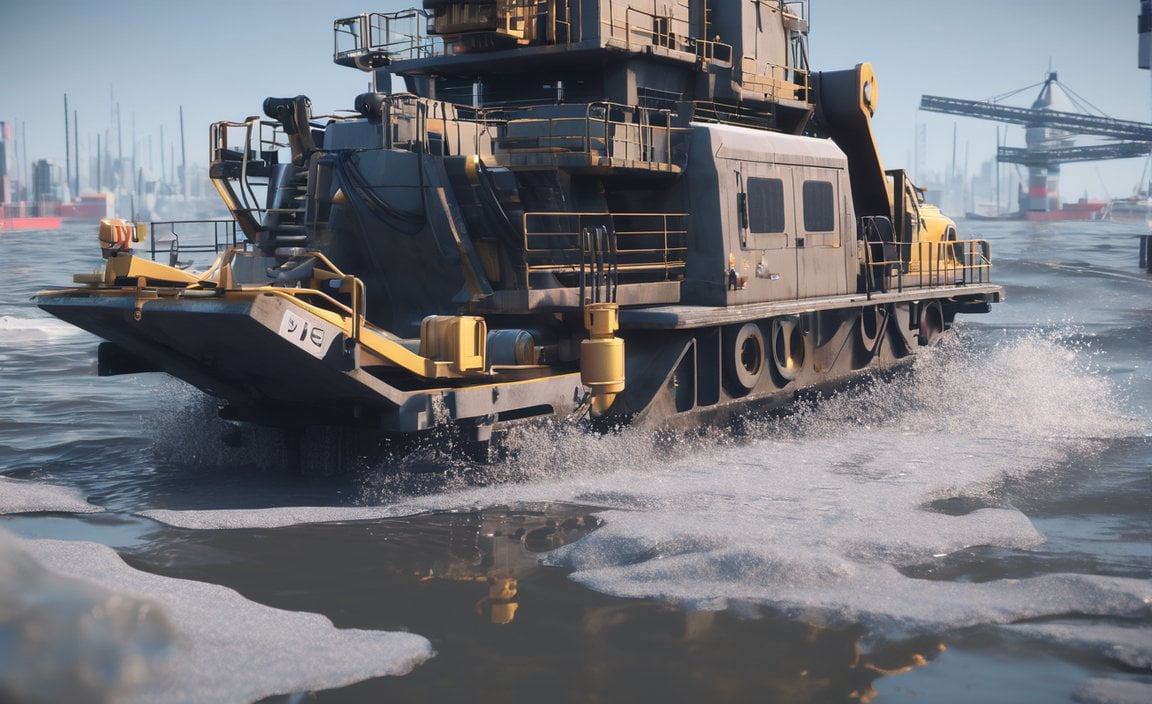Exploring the Pros and Cons of Dredging: Advantages and Disadvantages
Dredging, a practice widely employed to create navigational improvements and reclaim land, has become increasingly controversial due to its potential environmental impacts. In this article, we delve into the advantages and disadvantages of dredging, shedding light on both the benefits and concerns associated with this contentious practice. As we explore the subject, we aim to provide readers with a comprehensive understanding of dredging’s potential benefits, such as enhanced navigation and increased coastal resilience, as well as the environmental drawbacks, including habitat destruction and disruption. By offering a balanced perspective on this complex issue, we hope to foster informed dialogue and promote a greater understanding of the implications of dredging on our marine ecosystems.
Key Takeaways:
- Dredging can reduce flood risk in built-up areas by making rivers deeper and increasing their water-holding capacity.
- However, frequent dredging can also increase flood risk downstream by speeding up the river flow.
- Dredging can disrupt marine habitats and lead to a loss of biodiversity.
- The process of dredging can resuspend settled pollutants and degrade water quality.
- Dredging can improve navigation, create deeper waterways, and be used for beach nourishment and flood prevention.
- Dredging is a costly process, with extensive and expensive capital projects.
- Maintenance dredging is a regular, ongoing activity.
- Sediments excavated during dredging can cause resuspension in the water column and material loss during transfer and transport.
- Dredging materials are often used to create or restore habitats and have environmental advantages compared to quarrying.
- The purpose of dredging is to improve navigability by removing sediment or debris from bodies of water.
Advantages and Disadvantages of Dredging

Dredging is a process that has both advantages and disadvantages when it comes to its impact on the environment and human activities. In this article, we will explore these advantages and disadvantages in detail, shedding light on the various aspects of dredging. By understanding both sides of the coin, we can gain a comprehensive understanding of this practice.
Advantages of Dredging
1. Navigational Improvements and Flood Prevention:
Dredging plays a vital role in improving navigation by creating deeper waterways. This is especially important for ports and harbors that need sufficient depth for ships to navigate safely. By removing sediment and debris, dredging allows for smoother and more efficient marine transportation. Additionally, in built-up areas, dredging can help reduce the risk of flooding by making rivers deeper and increasing their water-holding capacity. This can be a crucial advantage in flood-prone regions.
2. Land Reclamation and Beach Nourishment:
Dredging can also be used for land reclamation purposes, where sediments are carefully deposited to create new land areas. This allows for the expansion of coastal regions and can serve various purposes, including urban development and tourism. Additionally, dredging can be employed for beach nourishment, replenishing eroded beaches with sand, and protecting coastal communities from the erosive forces of waves and tides.
3. Habitat Creation and Restoration:
Dredging materials, including sediments and materials like rocks and shells, can be used effectively for habitat creation and restoration projects. These materials can provide the building blocks for the creation of new habitats or the restoration of degraded ones. By utilizing dredged materials, we can minimize the need for resource-intensive quarrying and promote the conservation of natural ecosystems.
Disadvantages of Dredging
1. Habitat Destruction and Disruption:
One of the primary concerns associated with dredging is the potential destruction and disruption of marine habitats. Dredging activities can physically disturb fragile ecosystems, such as coral reefs and seagrass meadows, leading to habitat loss and the displacement of marine species. This can have significant ecological consequences, as these habitats provide essential nurseries, feeding grounds, and shelter for countless marine organisms.
2. Water Quality Issues:
The process of dredging can impact water quality by resuspending settled pollutants and sediments. This resuspension can degrade water clarity, reduce sunlight penetration, and harm aquatic plants and animals that rely on light for photosynthesis. Furthermore, the release of pollutants trapped in sediments can contribute to water pollution and subsequent ecological disturbances.
3. Cost and Maintenance:
Dredging is a costly process, both in terms of capital projects and ongoing maintenance. The extensive infrastructure required for dredging operations, including specialized vessels and equipment, can have significant financial implications. Additionally, maintenance dredging is often necessary to ensure continued navigability, making it an ongoing expense that needs to be considered.
In conclusion, dredging has both advantages and disadvantages that need to be carefully evaluated before undertaking any projects. While it can enhance navigational capabilities, assist in flood prevention, support land reclamation, and contribute to habitat creation, it also poses risks to fragile ecosystems, water quality, and comes with substantial costs. Striking a balance between our development needs and the preservation of marine environments is crucial for sustainable dredging practices.
To learn more about the advantages and disadvantages of canal lining, click here.
For insights on the advantages and disadvantages of canals, visit this link.
Interested in the advantages and disadvantages of coastal shipping? Discover more by clicking here.
Disadvantages of Dredging: Habitat Destruction and Disturbance

Dredging plays a vital role in improving navigability, preventing flooding, and even replenishing eroded beaches. However, it also has its drawbacks, particularly in terms of habitat destruction and disturbance. Let’s take a closer look at these disadvantages and why they are significant.
1. Habitat Destruction: One of the main concerns associated with dredging is its potential to destroy delicate marine habitats. When sediment or debris is removed from bodies of water, it can lead to the destruction of essential habitats, such as coral reefs and seagrass meadows. These habitats are home to a diverse range of marine species, and their loss can disrupt entire ecosystems and lead to a loss of biodiversity.
2. Habitat Disturbance: In addition to habitat destruction, dredging can also cause significant disturbance to marine ecosystems. The process of dredging can physically disrupt the natural balance of these habitats, displacing marine species and interfering with their feeding, breeding, and migration patterns. This disturbance can have long-lasting effects on the health and resilience of these ecosystems, potentially leading to population decline and the loss of valuable species.
These disadvantages of dredging—habitat destruction and disturbance—highlight the need to carefully consider the potential impacts of this activity on marine ecosystems. By understanding these drawbacks, we can work towards finding sustainable solutions that minimize the negative effects of dredging.
Key Takeaways:
– Dredging can result in habitat destruction and disturbance in fragile marine ecosystems.
– Delicate habitats, such as coral reefs and seagrass meadows, are particularly vulnerable to the impacts of dredging.
– The physical disruption caused by dredging can lead to the displacement of marine species and disrupt their essential life processes.
– Careful consideration and mitigation measures are necessary to minimize the negative impacts of dredging on marine habitats and biodiversity.
Sources:
[^1^]: Ablison. (2023). Pros and Cons of Dredging.
[^2^]: ScienceDirect. (2012). Environmental impacts of dredging and other sediment.
Environmental Considerations: Sedimentation and Impact on Marine Life
Dredging and sediment disturbances have significant environmental impacts on marine ecosystems. In particular, they can have detrimental effects on corals and other marine life. Understanding these environmental considerations is crucial in managing and minimizing the negative effects of dredging activities.
Effects of Dredging and Sediment Disturbances on Corals
Dredging activities and the resulting turbidity and sedimentation can negatively affect coral settlement and growth. Older, grazed turf assemblages may have varying impacts on coral settlement compared to younger turfs. Additionally, the resuspension of estuarine mud in nutrient-rich near-shore water can result in rapid smothering of coral reefs. Excessive copper from dredging activities can also reduce the viability of marine organisms and impact fertilization success. Additionally, eutrophication caused by nutrient enrichment can contribute to the decline of coral reefs.
Impacts of Dredging and Sedimentation in Specific Locations
Dredging and sediment disturbances can have specific impacts on coastal areas. For example, in Townsville, Australia, river discharges can lead to little or no reef development directly in front of the river outflow. In Bermuda Castle Harbour, a semi-enclosed marine basin, environmental impacts from sedimentation and competition among mushroom corals are observed.
Environmental Understanding and Sediment Management
To mitigate the negative environmental impacts of dredging and sediment disturbances, thorough understanding of the fate of dredged materials and the hydrodynamic processes involved is crucial. Choosing the optimal method for disposing of dredged materials requires considering settled materials, induced energy regimes, and the reasons for dredging and dumping. Preliminary predictions of material fate involve hydrodynamic knowledge and mathematical modeling to explain complex processes.
Sources:
– Erftemeijer, P.L.A., Riegl, B., Hoeksema, B.W., Todd, P.A. (2012). Environmental impacts of dredging and other sediment disturbances on corals: a review. ScienceDirect. Link to Article
– Naveed, S., Lawler, D.M., Lawler, R.J., Singleton, I., Riaz, M., & Shah, S.M.M. (2023). The impacts of dumping sites on the marine environment: a comprehensive review. Springer. Link to Article
Key Takeaways:
- Dredging activities and sediment disturbances can negatively affect coral settlement and growth.
- Estuarine mud resuspended in nutrient-rich water can smother coral reefs.
- Excessive copper from dredging can harm marine organisms and impact fertilization.
- Eutrophication caused by nutrient enrichment contributes to coral reef decline.
- Specific locations, such as Townsville, Australia, and Bermuda Castle Harbour, experience unique impacts from dredging and sedimentation.
- Proper understanding of sediment fate and hydrodynamic processes is crucial for mitigating negative environmental impacts.
Regulations and Best Practices to Mitigate Negative Impacts
Dredging is a complex process that can have both positive and negative impacts on marine ecosystems. To ensure the sustainability of dredging projects and minimize their adverse effects, it is crucial to implement regulations and adhere to best practices. In this article, we will explore the regulations and best practices to mitigate negative impacts associated with dredging.
Regulations and Guidelines for Dredging
Government regulations play a vital role in overseeing and controlling dredging activities. These regulations aim to protect the environment and ensure responsible and sustainable dredging practices. Here are some key regulations and guidelines that are commonly followed:
Environmental Impact Assessments (EIAs): Before initiating a dredging project, an assessment of the potential environmental impacts should be conducted. This assessment helps identify potential risks and develop effective mitigation measures.
Permitting and Licensing: Dredging activities often require permits and licenses from relevant authorities. These permits ensure that dredging projects comply with established environmental standards and regulations.
Monitoring and Reporting: Regular monitoring and reporting are essential to evaluate the impact of dredging operations on the environment. This information can help identify any adverse effects and implement corrective actions.
Best Practices to Mitigate Negative Impacts
In addition to regulations, following best practices is crucial to mitigate the negative impacts of dredging. These practices help minimize harm to marine ecosystems and promote sustainable dredging operations. Some important best practices include:
Dredge Material Management: Proper management of dredged material is crucial to minimize environmental impacts. Sediments can often be beneficially reused, such as for beach nourishment or habitat restoration. Implementing proper dredge material management techniques reduces the need for disposal in environmentally sensitive areas.
Erosion and Sedimentation Control: Implementing erosion and sedimentation control measures can help prevent the release of sediment during dredging operations. Techniques such as silt curtains and sediment traps can be used to contain and manage sediment runoff.
Sediment Containment and Treatment: Utilizing sediment containment systems, such as geotextile tubes or sediment ponds, can help capture and treat sediments before they are released back into the water. This process reduces the impact of dredging on water quality and aquatic life.
Habitat Protection and Restoration: To mitigate the loss of habitats caused by dredging, it is essential to prioritize habitat protection and restoration. This may involve creating artificial reefs, establishing marine protected areas, or implementing habitat enhancement projects.
Community Engagement and Stakeholder Participation: Involving local communities and stakeholders in the decision-making process can foster transparency and cooperation in dredging projects. Consultation and engagement help address concerns and incorporate valuable local knowledge.
Key Takeaways:
- Government regulations and guidelines, such as environmental impact assessments and permitting processes, play a crucial role in overseeing and controlling dredging activities.
- Regular monitoring and reporting are essential to evaluate the environmental impact of dredging operations and allow for timely corrective actions.
- Implementing best practices, such as proper sediment management, erosion control, and habitat protection, is vital to minimize the negative impacts of dredging.
- Engaging local communities and stakeholders in the decision-making process promotes transparency and cooperation in dredging projects.
Sources:
- Environmental Impact Assessments
- Best Management Practices for Dredging
FAQ
Q1: What are the advantages of dredging?
A1: Dredging offers advantages such as improving navigation, replenishing eroded beaches, and preventing flooding.
Q2: How does dredging improve navigation?
A2: Dredging creates deeper waterways, making it easier for boats and ships to navigate.
Q3: Can dredging prevent flooding?
A3: Yes, dredging increases the water capacity in a specific area, reducing the risk of flooding.
Q4: What are the disadvantages of dredging?
A4: Dredging can have negative impacts, including ecological disruption and degradation of water quality.
Q5: How does dredging disrupt marine habitats?
A5: Dredging can disturb marine habitats, potentially leading to the loss of biodiversity and disruption of ecosystems.
- Discover Northern Pakistan’s Hidden Gems: Your Ultimate Guide - March 27, 2025
- Explore Eastern Canada: Unforgettable Adventures Await - March 27, 2025
- Unlock New St. John’s Potential: Education & Faith - March 27, 2025
















